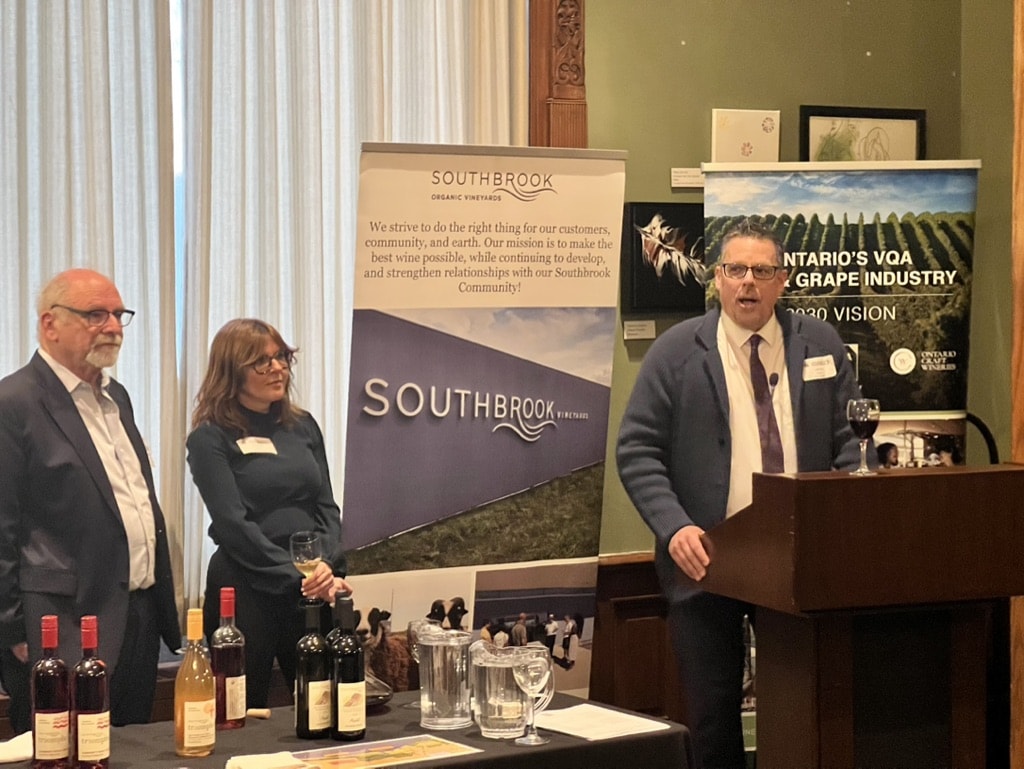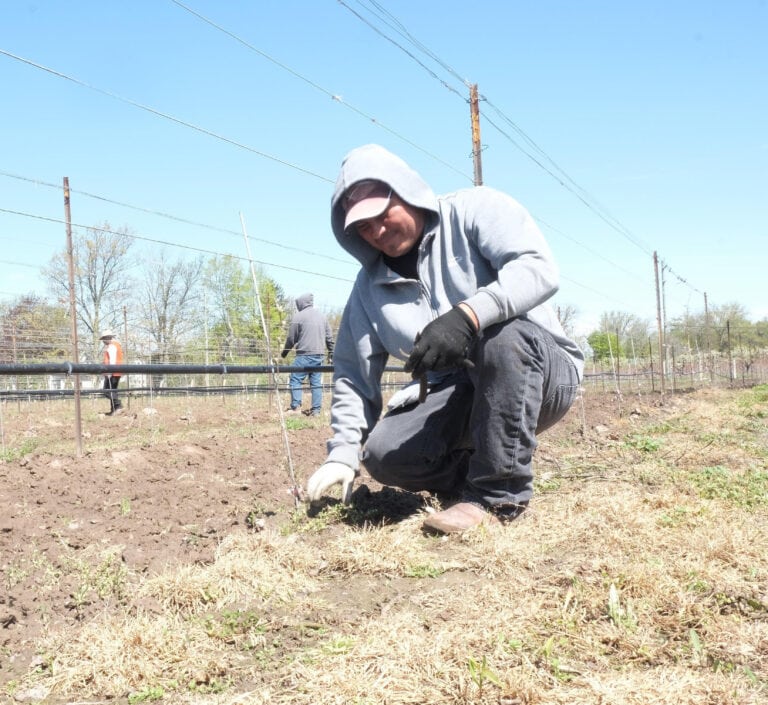Tax reductions, better access to markets among concerns cited by industry
Niagara wineries travelled to Queen’s Park with an important message, as well as some delicious VQA wine in an effort to lobby the government for changes to help the industry grow.
Leaders from more than a dozen wineries were on hand to underscore the economic importance of their industry and to pour some of their best wines at a reception following the official presentations.
“We hosted a launch of the Vision 2030 document at Queen’s Park, where we met with all levels of government, both political officials and bureaucrats, to celebrate the launch of the vision and to share with government the role that they need to play to help us achieve our ambition,” said Del Rollo, chair of Wine Growers Ontario.
Vision 2030 is a report created by the wine industry. It outlines a forecast for ambitious growth with big benefits to the economy – and it calls for more support from the government, including better access to markets and lower taxes on domestic wines.
“We had almost half to two-thirds of the cabinet ministers in attendance and all the key staff, so we were really able to share the message that we’re trying to deliver, and compel the government to understand that they play an active role in helping us to succeed,” Rollo added.
Bill Redelmeier, proprietor of Southbrook Organic Vineyards said this was the first time in 15 or 20 years that all of the wineries were represented.
“We’ve been dealing since the mid-2000s with the split between what I’ll characterize as the big versus the small wineries and now, thank goodness, for the first time in quite a while, we are standing on our soapboxes and asking for the same thing,” he said.
“That’s possibly the most important part of the whole exercise, getting everybody together. It’s huge,” Redelmeier said.
Vision 2030 was the product of many months of work and is a collaboration of three industry groups representing wineries of all sizes. Wine Growers Ontario worked with Ontario Craft Wineries and the Wine Marketing Association of Ontario to produce the report.
“And I found a really good response. I have since had some conversations with government officials, where they took note of the fact that we are aligned with what we’re looking for,” said Rollo.
That sentiment was confirmed by provincial agriculture ministry spokesperson Jack Sullivan.
“It’s great when they collaborate and come with a unified approach. When they’re working together it really benefits the entire wine industry,” he said.
“Working towards a common goal is helpful for them as an industry, but also for us as a government,” said Sullivan.
However, it’s too early for a response to the report, he added.
“We have received the report and recommendations and are reviewing them,” Sullivan said.
“And while we don’t have much to say at this point, we are taking their recommendations seriously and we’re still committed to working with the three organizations to grow Ontario’s wine industry.”
“It’s encouraging that they submitted it, and encouraging that they want to grow the industry together,” he added.
Vision 2030 describes a future for the wine industry with dramatic growth in consumer demand and sales, with a corresponding increase in market share; more tourist visits; a doubling of acres under vine by planting of another 20,000 acres; increased capital investment; and subsequently a boost in people employed directly and indirectly in the wine industry, to 40,000 from 22,000.
The report underlines the need for changes to current taxation and regulation policies, to enable the growth.
Carolyn Hurst, chair of Ontario Craft Wineries, noted, “Growth is wholly dependent on the changes that we’re asking for.”
“In order for our industry to unleash sharp growth, we need a couple of things to change. We need better access to markets and we need a better tax structure,” she added.
“We are taxed like an import, so there’s no domestic advantage to us selling our wines in the only place that we’re allowed to sell them other than our own stores,” she said, referring to the LCBO.
“I think that consumers want what we’re producing, but the taxation makes us uncompetitive in our own market,” she added.
The industry argues that is why market share for Ontario wines is stagnant and points to other jurisdictions to demonstrate how lower taxation and better market access support greater success.
“The American wine industry has gone from nothing to being very successful, controlling about 70 per cent of their market. The B.C. wine industry has gone from zero to 25 per cent of their market. And the Ontario market is stuck at about 7 or 8 per cent,” said Redelmeier.
Wine industry advocates have long said the LCBO doesn’t adequately promote Ontario wines in its stores, while at the same time its markups and taxes are too high.
For example, according to Redelmeier, when a $30 bottle of wine is sold at a winery, the winery keeps roughly two-thirds. When that same $30 bottle of wine is sold at the LCBO, the winery keeps one-third.
Another sore point is the 6.1 per cent provincial tax charged on wine sold at the cellar door, in addition to HST.
Wineries in “no other country are charged that 6.1 per cent extra levy,” Redelmeier pointed out.
“We would really like some signal from the provincial government that they’re supportive of our industry. There’s 140 of us in this province, trying to make a living, trying to do the right things in terms of how we operate, producing beautiful world-class wines that are celebrated everywhere else in the world,” said Hurst.
With a provincial budget coming up, Rollo hopes to see some action.
“But, you know, it’s a journey for us over the course of the next year to see if we can get what we need,” he said.
Sullivan said changes can be complex and require collaboration within government.
“These matters cross multiple ministries. Most of the alcohol legislation regulations fall within the Ministry of Finance. So any response, or anything we do around their vision is going to be a multi-ministry type of approach, not just one ministry,” said Sullivan.
Rollo sums it up this way.
“I’m cautiously optimistic. The government has got a lot of priorities, but having a united vision, with the industry speaking with one voice, is something that they haven’t seen in the last little while, because we’ve had multiple people going in asking for multiple different things,” he said.
“But we’re very aligned as an industry now. And they also recognize that, COVID and, whether this is a recession or whether it’s just the downturn of the economy, it is challenging, and a healthy wine industry is very important to the economy.”
“So, I think they’re listening.”










